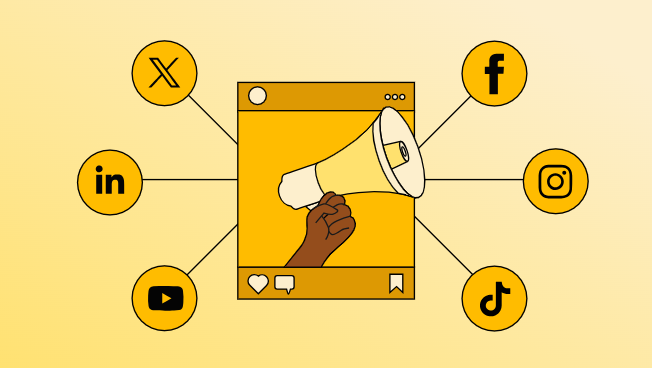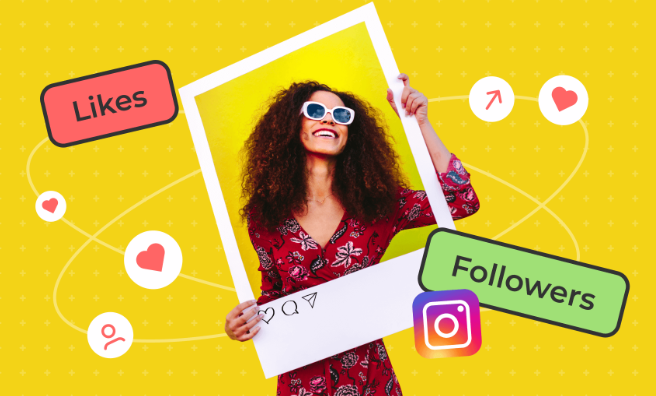The Evolution of Influencers in the Digital Age
 Hemant SEO
Hemant SEOIn the past decade, the digital landscape has been revolutionized by a new wave of public figures: influencers. These digital personalities have become an essential part of modern marketing, culture, and consumer behavior.
The influencer landscape, however, didn’t just appear overnight. It evolved with the rise of social media, changes in content consumption, and advancements in technology.

In this guide, we will explore how influencers came to dominate the digital world, from their humble beginnings to the tech-driven, highly entrepreneurial powerhouses they are today.
The Early Days: The Birth of Digital Influencers
Before Instagram, YouTube, and TikTok, the concept of "influencers" was much more limited. Back then, most famous individuals were traditional celebrities—actors, musicians, or sports stars. These individuals influenced culture and trends in traditional media (TV, radio, magazines, etc.), but the internet was still in its early stages of development.
Pre-Social Media Era
In the late '90s and early 2000s, the first wave of digital influence began. People began to build audiences through websites and blogs. For instance, Perez Hilton was a blogger who gained fame by gossiping about celebrities, becoming one of the first internet personalities to have an influential platform. Similarly, Tavi Gevinson, a young fashion blogger, began to attract attention in the early 2000s. Gevinson’s website, Style Rookie, made her a household name among fashion enthusiasts and gave a glimpse into the future of influencer culture.
At this time, digital influence was mostly about text-based content. These bloggers wrote about fashion, beauty, and lifestyle, and their followers began to rely on them for advice, recommendations, and trends. They were some of the first "digital influencers," but their reach was nowhere near what we see today.
Rise of Social Media Platforms
By the early 2010s, platforms like Facebook and Twitter had begun to change the way people communicated and connected. Instagram was launched in 2010, followed by the rise of YouTube, which had already been around for a few years. These platforms allowed people to share photos, videos, and ideas with an increasingly large audience.
Content creators and “influencers” began moving beyond blogs, using platforms like Instagram and YouTube to reach a much broader audience. Suddenly, ordinary people with creativity, talent, and an online presence could gain fame. For example, YouTubers like Michelle Phan and Zoe Sugg (Zoella) started creating beauty tutorials and lifestyle videos. They gathered huge audiences and were able to monetize their content through sponsorships and ads.
This was the beginning of what we now know as the "influencer" industry.
The Rise of Instagram and YouTube: Influencers Take Center Stage
As the digital world evolved, so did the ways influencers interacted with their audiences. With Instagram's launch in 2010 and YouTube’s continuing growth, the influencer landscape grew more diverse, and their influence expanded significantly.

Platform Shift
Instagram’s focus on visual content like photos and short videos quickly gained popularity, particularly among fashion and beauty influencers. Influencers no longer had to write long blog posts or create elaborate websites; they could simply share pictures, captions, and stories that would engage their followers. Instagram Stories, which were introduced in 2016, also allowed for more spontaneous and behind-the-scenes content, creating a deeper connection between influencers and their followers.
YouTube, on the other hand, provided a platform for long-form video content. Many influencers on YouTube built their careers by sharing tutorials, unboxing products, or creating lifestyle content. People like James Charles, PewDiePie, and Shane Dawson became household names due to their consistent video production and highly engaging personalities.
Monetization of Influencers
With their growing popularity, influencers realized they could earn money through brand partnerships, sponsored content, and affiliate marketing. Brands saw the value of reaching a targeted, engaged audience through influencers rather than traditional advertising methods.
For instance, a beauty influencer on Instagram could promote a makeup brand in exchange for payment or free products. Similarly, YouTubers were paid through the platform’s ad revenue program, while also working with brands for more direct collaborations.
This marked the beginning of the influencer marketing industry—companies recognizing that influencers could be powerful partners in driving brand awareness and sales.
The Rise of Micro-Influencers & The Age of Authenticity
While big-name influencers like Kylie Jenner and Zoella dominated the early influencer scene, a new trend was emerging: micro-influencers. These influencers typically had smaller, more niche audiences but offered higher engagement rates and authentic connections with their followers.
Shift Toward Niche Audiences
Rather than focusing on mass-market influencers with millions of followers, brands began to realize the power of smaller-scale influencers. Micro-influencers are individuals with fewer followers (usually between 1,000 and 100,000), but they often have a more dedicated and engaged following. Their audiences tend to trust them more because they seem more relatable and approachable.
This authenticity was key. Audiences no longer wanted to follow influencers who felt too polished or unattainable; they wanted people who felt like real friends. Micro-influencers, with their focus on niche content, filled that need.
The Influence of Authenticity
As a result, authenticity became a major factor in influencer success. Influencers were increasingly expected to show their true selves, flaws and all, and to engage with followers in meaningful ways. Instagram Stories, TikTok’s behind-the-scenes content, and even live-streaming on YouTube allowed influencers to connect with their followers on a more personal level.
Brands took notice of this trend and began partnering with micro-influencers for more authentic marketing campaigns. This shift towards trust and authenticity reshaped the influencer marketing landscape.
The Expansion into New Platforms: TikTok, Snapchat, and Beyond
While Instagram and YouTube were already well-established platforms, newer platforms like TikTok and Snapchat brought a whole new dimension to influencer culture. The rapid growth of TikTok in particular has reshaped how content is created and consumed.
TikTok’s Influence
TikTok, which gained mainstream popularity starting in 2018, introduced a new form of content: short, engaging videos that could go viral in a matter of hours. The format, which combined music, dance, and creativity, gave rise to an entirely new generation of influencers.
TikTok allowed anyone, regardless of their background or expertise, to create viral content. Charli D’Amelio, a teenager who danced in her bedroom, became the most-followed person on the platform in record time, and other TikTok stars like Addison Rae followed in her footsteps. These influencers grew their audiences through sheer creativity and the virality of their videos, bypassing traditional means of gaining fame.
Snapchat’s Role
Snapchat, while not as widely discussed as Instagram or TikTok, also played a key role in the influencer landscape. The app’s focus on ephemeral content—messages and stories that disappear after 24 hours—made it ideal for influencers who wanted to create intimate, personal content without the pressure of it being permanent. Snapchat also introduced the concept of filters, allowing influencers to enhance their photos and videos with fun, playful elements.
Other Emerging Platforms
Other platforms, like Clubhouse (an audio-based social network) and Twitch (focused on live-streaming), continue to shape the influencer ecosystem, giving rise to new types of content creators.
Influencers as Entrepreneurs: The Business of Personal Branding
As the influencer industry matured, it was no longer just about sharing content and making money through sponsorships. Influencers began to branch out into entrepreneurship, using their platforms to build their own businesses.
From Endorsements to Product Lines
One of the biggest trends in influencer entrepreneurship is the creation of product lines. Influencers no longer simply promote products—they create their own. For example, Kylie Jenner turned her popularity into a $900 million cosmetics empire with Kylie Cosmetics. Similarly, Rihanna’s Fenty Beauty was a revolutionary product line that capitalized on both Rihanna’s influence and her commitment to inclusivity in beauty.
These personal brands allow influencers to build long-term business models and diversify their income streams.
Influencer Networks and Agencies
With the rise of influencer marketing, influencer agencies have also sprung up. These agencies work with influencers to help them negotiate partnerships, create branded content, and grow their personal brands. Major agencies like Gleam Futures and Social Chain manage hundreds of influencers, helping them capitalize on their reach.
The Dark Side: Challenges and Criticisms of the Influencer Industry
As the influencer industry grew, it faced its share of criticisms and challenges.
Authenticity and Transparency Issues
One of the biggest concerns around influencers is the question of authenticity. Influencers are often paid to promote products, but many of them don't always disclose their partnerships clearly, leading to questions about trustworthiness. In response, governments and organizations have started implementing stricter guidelines for disclosure of sponsored content.
Mental Health and Burnout
The pressure to maintain a constant online presence can take a toll on influencers’ mental health. Many influencers experience burnout, anxiety, and stress as they try to keep up with the demands of their followers and brands.
Controversies and Scandals
The influencer industry is not immune to scandals. Whether it’s influencers caught in fraud schemes, making offensive comments, or engaging in unethical behavior, these controversies can damage their reputations and shake the industry as a whole.
Conclusion
Influencers have come a long way since the early days of blogging and social media. From niche bloggers to global entrepreneurs, influencers are now a powerful force shaping culture, marketing, and consumer behavior.
As we look to the future, it’s clear that influencers will continue to evolve. The rise of AI, virtual influencers, and new platforms will bring even more opportunities for creators to connect with audiences in innovative ways.
Subscribe to my newsletter
Read articles from Hemant SEO directly inside your inbox. Subscribe to the newsletter, and don't miss out.
Written by
